#Phanagoria
Text
Archaeologists have unearthed a synagogue in Russia dating back to the Second Temple Period. The structure was part of the ancient Greek city of Phanagoria, located near the Black Sea.
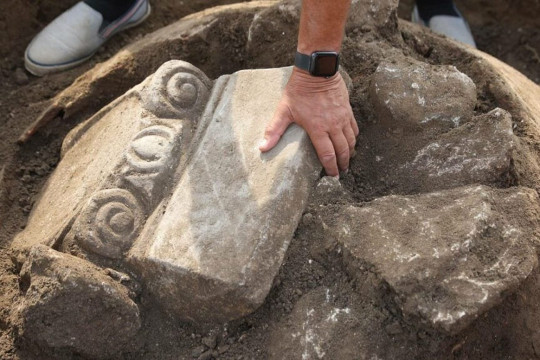
Russian billionaire Oleg Deripaska’s Volnoe Delo Foundation is providing financial support for the excavation work, which has been taking place since 2004.
“The synagogue’s foundational structure and wall outlines, carefully preserved over time, were unearthed along the Black Sea’s picturesque Taman Peninsula,” Ruben Bunyatyan of the Foundation told Neos Kosmos, a Greek community newspaper based in Melbourne, Australia.
The archaeologists reported that the synagogue’s rectangular dimensions were 21 by 6 meters (69 by 20 feet). It was split into two chambers, each more than 60 square meters (645 square feet) in area.

Phanagoria was founded in 356 BCE by Greek colonists from Teos on the western coast of Anatolia who fled Asia Minor after their conflict with the Persian King Cyrus the Great. The city served as the capital of the Bosporan Kingdom and was an important trade hub connecting the southern Caucasus with the Maeotian Marshes.
The Second Temple was built upon the ruins of the First Temple and stood in Jerusalem from 516 BCE until 70 C.E. when it was destroyed by the Romans.
“All religious ceremonies were centered around the Temple, rendering synagogues a rarity. While the earliest synagogues date back to the third century [BCE], their construction proliferated notably during the third century [C.E.]. Thus, the Phanagoria synagogue stands as a pioneering example of these early centers of worship, casting light on an era of Jewish history rarely glimpsed,” said Bunyatyan.
24 notes
·
View notes
Text
Interesting article on finds from Phanagoria next to the Black Sea.
32 notes
·
View notes
Text
Ancient Iranian sword unearthed in Russia
Archaeological news of great significance:An ornate Iranian sword has recently been recovered during an excavation survey in the Black Sea Region,in the present-day Krasnodar Krai of Russia. Tehrantimes.com give us the whole image in details.https://www.tehrantimes.com/news/477732/Ancient-Iranian-sword-unearthed-in-Russia
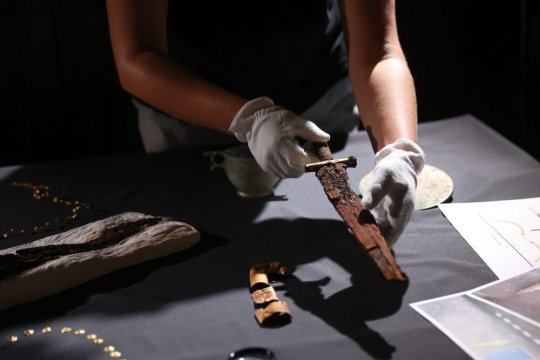
Dating back to the 4th to the 6th century CE, the sword, along with several relics, have been unearthed from a warrior burial, who was an inhabitant of the Taman Peninsula, Heritage Daily reported on Saturday.
The sword suggests a political and cultural connection with the Sassanian or Neo-Persian Empire from modern Iran and Iraq, likely given as a diplomatic gift or taken as a military trophy, the report added.
Also, the archaeological project yielded pieces of a harness, buckles, and belt tips, as well as high-status items such as glass jugs, wooden and metal utensils, and wooden boxes with decayed cloths.
There is no doubt that the cited warrior was a representative of the elite of Phanagoria and was a bearer of the military aristocratic culture of the Bosporan Kingdom in the Migration Period, said one of the members of the project.
The ancient city of Phanagoria was a Greek colony, first founded in the Taman peninsula by Teian colonists in the 6th century BC after a conflict with the Persian king Cyrus the Great. The city grew into a major trading center that, along with the associated necropolis, covers an area of over 2223 acres.
Image below:King Cyrus the Great. Source:https://heritage-history.com/index.php?c=resources&s=char-dir&f=cyrus1
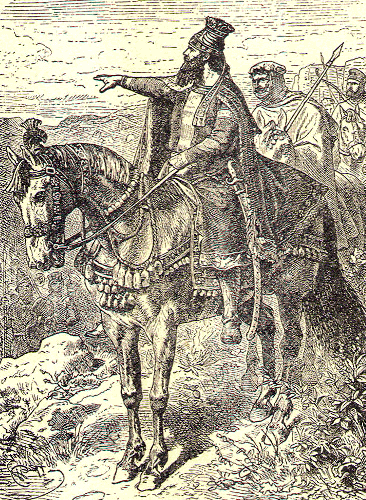
In many ways, Iran under Sassanian rule witnessed tremendous achievements of Persian civilization. Experts say that the art and architecture of the nation experienced a general renaissance during Sassanid rule.
In that era, crafts such as metalwork and gem engraving grew highly sophisticated, as scholarship was encouraged by the state; many works from both the East and West were translated into Pahlavi, the official language of the Sassanians.
The legendary wealth of the Sassanian court is fully confirmed by the existence of more than one hundred examples of bowls or plates of precious metal known at present. One of the finest examples is the silver plate with partial gilding in the Metropolitan Museum of Art in New York. The dynasty was destroyed by Arab invaders during a span from 637 to 651.
#ancient Persia#ancient Iranian sword#Krasnodar Krai#Phanagoria#king Cyrus the Great#Sassanian empire#Persian civilization#Russia#ancient Greece#Black Sea#ancient Greek colonies#culture#cultural exchanges#diplomatic gifts#ancient military trophy#heritage-history#arab conquest#Cyrus the Great
10 notes
·
View notes
Text
I meant to say Astrology! 😅
4 notes
·
View notes
Text
Phanagoria and Spooky Reads
Phanagoria and Spooky Reads
Hello, my Freaky Darlings!
While it continues to be a shit show on the global front, things have been going pretty well in my little author world. I signed a release and finalised edits for one of my stories in an upcoming anthology. I’ll share more on that closer to the time of publication. I’ve also been writing up a storm. It looks like I’m on track to getting Sliced and Diced 3 out towards…

View On WordPress
0 notes
Text
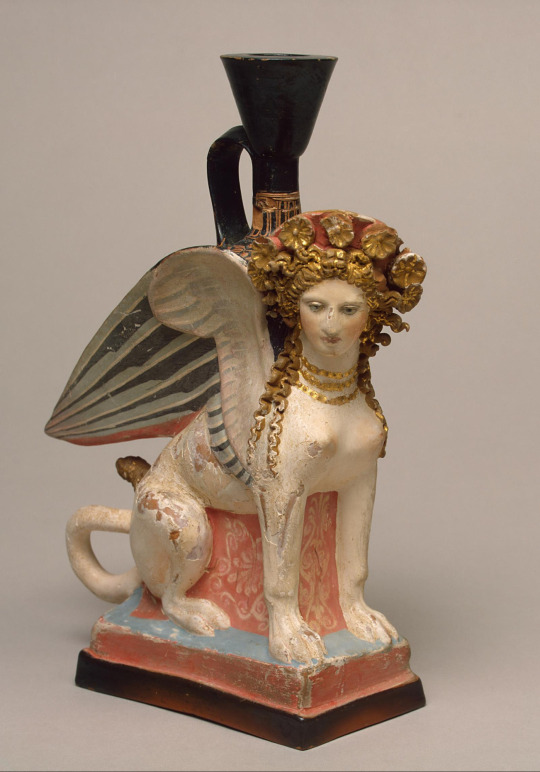
Ancient Greek terracotta vessel in the shape of a sphinx, 5th century BC. One of 26 similar pieces discovered in a feminine necropolis ("Demeter's priestess") near Phanagoria, Peninsula of Taman, modern Russia
1K notes
·
View notes
Photo
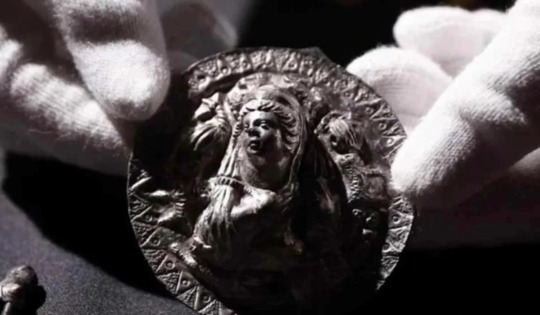

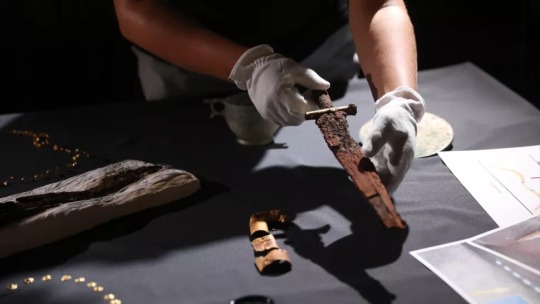

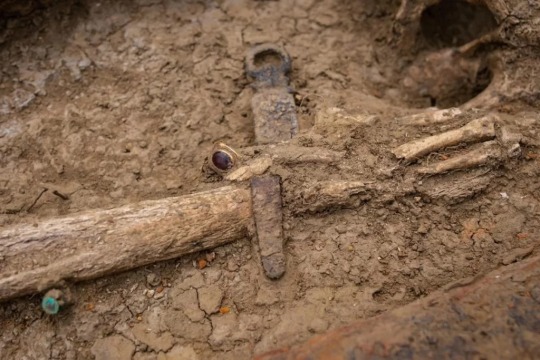
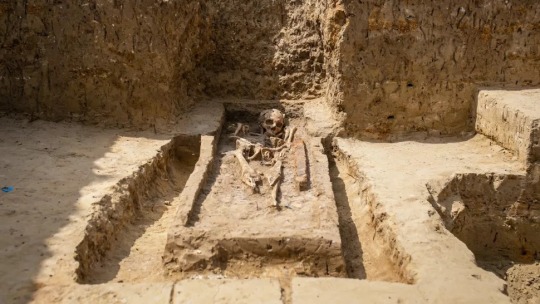

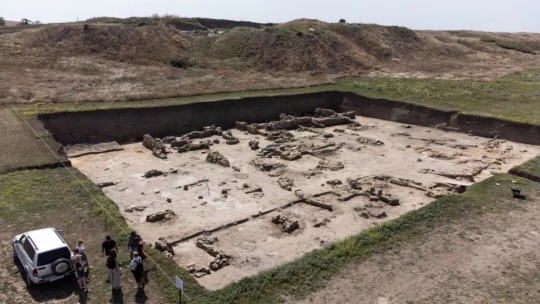
A 2100-Year-Old Medallion of Goddess Aphrodite and a Warrior Tomb Found in Russia
Archaeologists have unearthed a silver medallion depicting the Greek goddess Aphrodite (Roma Venüs) in a 2100-year-old grave of a priestess on the northeast coast of the Black Sea.
The unique medallion depicts ten rather than the known twelve signs of the zodiac and provides insight into religious practices at the time of its creation.
The discovery, in the opinion of archaeologists, raises the possibility that the buried woman was an Aphrodite priestess, the goddess of beauty and love. The rings, silver earrings, and other grave goods that were dedicated to the goddess led to these conclusions.
The grave is among a number of striking finds unearthed this summer at a site near the shore of the Taman Peninsula in southern Russia, east of the Crimean Peninsula and between the Black Sea and the Sea of Azov.
According to the Oleg Deripaska Volnoe Delo Foundation’s spokesman Ruben Bunyatyan, archaeologists Nikolay Sudarev and Mikhail Treister discovered the woman’s grave during the Phanagoria archaeological expedition’s 2022 summer season.
The large medallion is made of silver and shows the goddess Aphrodite in the center, surrounded by symbols portraying 10 signs of the zodiac.
Greek historian, Hecataeus of Miletus, said that Phanagoria was founded in the sixth century B.C. by refugees from Teos, a Greek city on the coast of Anatolia now part of modern-day Turkey.
The Aphrodite medallion is surrounded by 10 embossed symbols that correspond to signs of the zodiac, including a lion for Leo, a bull for Taurus, and a scorpion for Scorpio. But the symbols for the zodiac signs Aquarius and Libra are missing, and the researchers don’t know why.
According to archaeologists, the inclusion of the zodiac indicates the medallion is a portrayal of “Aphrodite Urania” — the heavenly aspect of the goddess, as distinct from her Earthly aspect, “Aphrodite Pandemos.”
It also suggests a belief in astrology, the idea that the positions of celestial bodies can influence events on Earth, which was widespread throughout the ancient world.
The silver medallion found in the early first century B.C. grave shows the embossed head, shoulders, and hands of Aphrodite, based on other contemporary iconographic portrayals.
Such medallions were common in the territory of the Bosporan Kingdom as early as 2,300 years ago, said Maria Chashuk, senior research associate of the Phanagoria archaeological expedition.
The medallion is about 7 centimeters (2.75 inches) in diameter and 15 millimeters thick.
Medallions of the sort were used in many ways: as brooches, as headgear accessories, and as pendants.
Another intriguing find at the Black Sea site was a warrior’s tomb featuring a sword that had been made in early medieval Iran.
The large iron sword was found in the style of swords from the Sassanid, or the second Persian Empire, which ruled the areas of modern-day Iran, Iraq, Turkmenistan, and much of Afghanistan. The researchers think that the sword may have been a diplomatic gift or that it may have been taken as a military trophy.
According to the statement from the Volnoe Delo Foundation, “this massive, expensive and prestigious sword was part of the equipment of the horsemen of the era of the Great Migration,” a period when much of Europe and Western Asia was threatened by invasions of peoples from Central Asia, such as the Huns. The unique find not only reflects the tastes of the late antique warriors of the Taman Peninsula, but also suggests that in the middle of the first millennium Phanagoria had close political and cultural ties with the [Sassanid] Empire,”
The warrior’s tomb (first century B.C.) also contained fragments of a horse’s harness, buckles, belt tips, glass jugs, utensils, and wooden boxes, as well as a pottery jug, beads, a brass mirror, and a pair of iron scissors.
By Leman Altuntaş.
#A 2100-Year-Old Medallion of Goddess Aphrodite and a Warrior Tomb Found in Russia#greek goddess aphrodite#aphrodite priestess#archeology#archeolgst#ancient tomb#ancient grave#ancient artifacts#history#history news#ancient history#ancient culture#ancient artifacts#greek history
156 notes
·
View notes
Text
Okay so I just had to do some research into Tiresias, a generally minor character from Greek mythology. These days he's mostly known for being a blind prophet and for also turning into a woman for seven years as a punishment, but it turns out that there is so much more to their story than that. Because it generally gets confusing about what gender they are, I will be referring to Tiresias (T) as they/them for the sake of clarity.
So first of, the two main stories that are in modern day mythology books are these:
That T was born a man, came across two snakes having sex one day and hit them with a stick, which angered Hera so she turned T into a woman.
That T was born a man, and accidentally saw Athena bathing, so she blinded T and turned T into a woman, but felt bad so gave T the powers of prophecy.
But T may have a much more interesting and longer story than this, including not one, not two, but eight sex changes throughout their life. Now we don't know too much about the actual content of the story, as the only surviving records of the six to eight sex changes that T goes through are either from fragmentary works from Hesiod or pseudo-Hesiod, and a summary of the lost elegiac poem Tiresias by Ptolemaeus Chennus or Sostratos of Phanagoria.
There are references to the story of Tiresias in the Bibliotheca, however this one simply tells the Athena story, which isn't referenced by earlier writers.
However, reconstructing the story of Tiresias as told by Hesiod and Ptolemaeus Ch. we get something which looks like this.
T was originally born female, and early on in life Apollo took a fancy to T, and so went to have sex with them. T agreed on the condition that Apollo teach T how to play music first, which he did, but then T refused to sleep with Apollo, which made him made so he turned T into a man 'so T would feel the arrow of Eros'.
Having been turned into a man, T was asked to mediate an argument between Zeus and Hera, about who had more fun during sex, men or women. T said, having been both, said that women have more fun. As punishment, Hera turned T into a woman.
After been turned into a woman, T laughed at a statue of Hera and Hera turned T into a ugly old man as punishment.
Zeus took pity on T, and turned T into a woman at the 'bloom of her youth'
When T was bathing one day, a man called Glyphius tried to rape T, but T is too strong and strangles him. Since Glyphius was a favourite of Poseidon, he takes T to court who turn T into a man as punishment. They also took away T's skill at prophecy.
T attended the wedding of Peleus and Thetis (The parents of Achilles. This is the wedding which kicked off the trojan war) and judged an apparently unrelated beauty contest to the one with Eris and the golden apple, this one between Aphrodite and the Graces, Pasithea, Euphrosyne, and Cale. T chose Cale as the most beautiful, and as punishment Aphrodite changed T into an ugly old woman, though Cale took pity on T and gave them a really good head of hair.
[...] at this the goddess became angry and changed T into a mouse, and this is why mice eat very little, as they had once been an old lady, and also why mice are prophetic.
Now this gives us with some questions, but one main one. How did T become a prophet? Well, this ties into the version of the story with Athena, recounted by Ovid in his Metamorphoses. As a man, T sees Athena naked and makes T blind as a punishment. T's mother, the nymph Chariclo, begs Athena to change T back, but Athena refuses. Chariclo then washes T's ears, which gives T the power of prophecy, because T can now understand the cries of the Augury bird.
Another question is why, if T had judged that women have more fun during sex, would she turn T into a woman as punishment. Now you could argue a certain more assaulty reason, but the punishment makes much more sense if we put the story about the snakes before T mediates the argument.
The story goes that T, as a man, comes across a pair of snakes having sex and hits them with a stick, causing them to break apart. Hera objects to this, and so turns T into a woman as a punishment and T becomes a priestess of Hera. Then T mediates the argument, and T turns into a man. This isolated version of the story is one that survived to most modern mythologies.
Now there are several more things, but we really don't know too much about anything to do with Tiresias really, as the best work we know of which details his whole life is fragmentary at best and completely lost at worse. There are a ton of miscellaneous notes and facts about him. Apprently Zeus gave T a lifespan seven times longer than that of a human. He might've been blinded for knowing the secrets of the gods. He frequently communicated with the dead in order to tell his prophecies, and when Odysseus went to the land of the dead T was the only person that recognised him. Not even Odysseus' mother could recognise him without drinking a special drink. The word Tiresias was also a by-name for a prophet in ancient Greece. He was a reoccurring character in Greek Tragedies, most notably in the Bacchae, where he joins in the bacchic revels. He also assists Oedipus in the murder investigation of Laius, the previous king, and dies after drinking tainted water and getting shot by Apollo.
Tiresias is characterised as an extremely old prophet who communicates with birds and the dead, and has knowledge of the lives of Men, Women, and the gods.
That's fucking badass, and it pains me to know that'll we'll never know more than that.
source: Supplimentum Hellenisticum
#mythology#greek mythology#long reads#long post#ancient greece#ancient greek#tw: r*pe#Oedipus#Tiresias#genderfluid#trans#Would they count as trans?#I suppose they're not willingly trans#so maybe not#characters#funnily enough at the end of the passage about Tiresias there's a footnote#*apparently something similar happened to Caenus as well#like what#how often do the gods changes people's gender on a whim#moral of the story#piss off the gods to get a free sex change#or wash your ears to become a prophet#or both!
37 notes
·
View notes
Text
Archaeologists have unearthed a 1,900-year-old burial of a priestess from an Aphrodite cult in an ancient necropolis in Russia, as well as a warrior’s burial, complete with an ornate sword.
69 notes
·
View notes
Text
One of the World's Oldest Synagogues Has Just Been Discovered
8 notes
·
View notes
Text



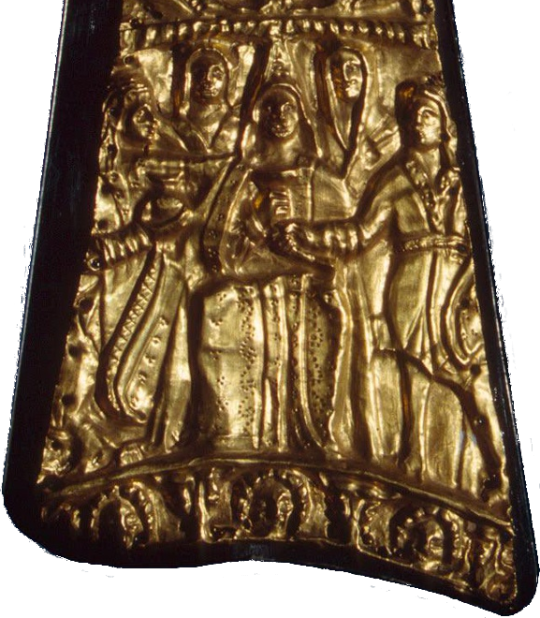
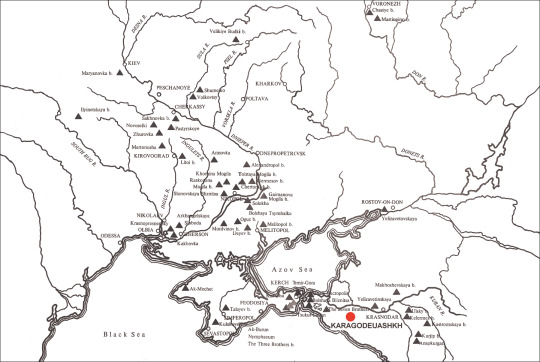


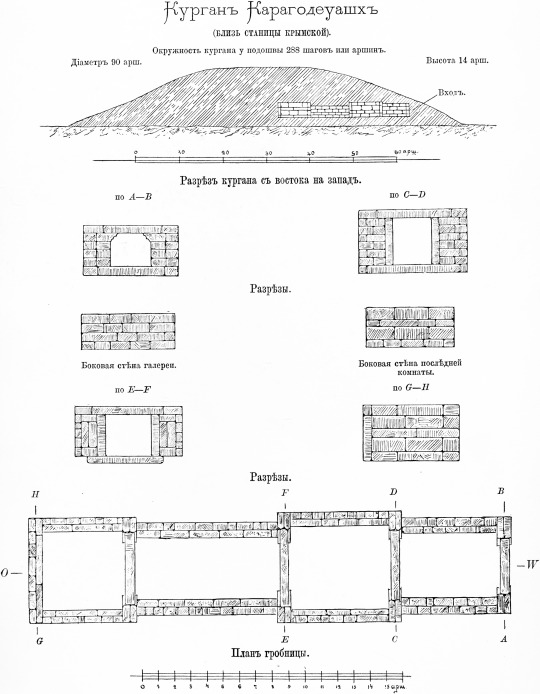
The female burial at Karagodeuashkh, Scythian or Sindo-Maeotian, 340-315 BCE
I couldn't find a lot of concrete info on all this, a lot of it was varied speculation on who the buried was and what the trinkets might represent. The finds may have been from a Sindo-Maeotian elite, of possible Scytho-Greek manufacture. Though some of the sources I looked at say the Sindi were a Scythian tribe, themselves. Others say they were something else. The headdress may feature the deceased woman's apotheosis or deities, or a combination of the two. Unfortunately I couldn't find info on the male buried with her.
Some general geographical info from Strabo: "Upon sailing into the Corocondametis, we meet with Phanagoria, a considerable city, Cepi, Hermonassa, and Apa turum, the temple of Venus (Apatura). Of these cities Phanagoria and Cepi are situated in the above-mentioned island on the left hand at the entrance of the lake; the others are on the right hand in Sindica beyond the Hypanis. There is Gorgipia, but the royal seat of the Sindi is in Sindica near the sea, and Aborace.
All those who are subject to the princes of the Bosporus are called Bosporani. The capital of the European Bosporani is Panticapæum, and of the Asian Bosporani, the city of Phanagorium, for this is the name given to it. Phanagoria seems to be the mart for those commodities which are brought down from the Mæotis, and from the barbarous country lying above it; and Panticapæum, the mart for the commodities which are transported thither from the sea. There is also in Phanagoria a magnificent temple of Venus Apatura, the Deceitful. This epithet of the Goddess is derived from a fable, according to which the giants assaulted her in this place. Having obtained the assistance of Hercules she hid him in a cave, and then admitted the giants one by one into her presence, and delivered them over to Hercules, thus craftily to be put to death.
The Sindi, Dandarii, Toreatæ, Agri, Arrhechi, and besides these, the Tarpetes, Obidiaceni, Sittaceni, Dosci, and many others, belong to the Mæotæ; to this people belong the Aspurgiani also, who live between Phanagoria and Gorgipia, at the distance of 500 stadia [from the Mæotis?]. Polemon, the king, entered the country of these people under a show of friendship, but his design was discovered, and they on their part attacked him unawares. He was taken prisoner, and put to death.
With respect to the Asian Mæotæ in general, some of them were the subjects of those who possessed the mart on the Tanaïs; others, of the Bosporani; and different bodies have revolted at different times. The princes of the Bosporani were frequently masters of the country as far as the Tanaïs, and particularly the last princes, Pharnaces, Asander, and Polemon."
-Strabo's Geography, Book 11.2
#scythian#scythian gold#scythian mythology#caucasus#caucasian#antiquities#sculpture#history#art#literature#pagan#paganism#aphrodite#4th century bce
21 notes
·
View notes
Text
@a-mixed-bag-of-dbh
💧 my muse is a merperson, and yours is the merperson they are betrothed to marry, to unite their underwater kingdoms.
Connor knew this day was going to come, but he hadn’t expected it to come so fast. He tried to run, to escape his fate, but he was soon found. His father chastised him, reminding him that this union will bring peace to two kingdoms that had feuded for centuries. His actions were selfish, but is it so wrong to want to taste freedom at least once before he was forced into a loveless marriage, duty bound to produce children, and work to keep the peace?
Today will be the day the families gather. Connor can see them starting to arrive from the top of his tower. His servants were trying to fuss over him as he stares out the window, dressing him in carefully carved coral, silver, and shells. They place a crown atop his head, made with polished unicorn shells, black coral, and blue eyris pearls. Connor finds it a bit much, but he’s supposed to look both beautiful and powerful to the other kingdom, worthy of sharing their power and wealth, as if he actually wants it.
There’s a knock on the door. He finally turns away from the window, seeing Kara, his father’s advisor, “It’s time to come greet the family, prince Connor. Your father has asked me to remind you to be on your best behavior for the sake of our people.”
Rather than give a sarcastic remark as he usually would do in such a situation, the merman only nods, looking at himself in the mirror for a moment, before going downstairs to join his father.
....
“I present to you, Prince Connor of Phanagoria!” The crier shouts, signaling Connor to enter the large dance hall, holding his head up high, his bioluminescence shining as he swims up to the throne. At the top is his father and the other kingdom’s family, among them is assumingly the prince he’s betrothed to.
“It is an honor to make your acquaintance,” He bows to the other kingdom.
#Gavin // a-mixed-bag-of-dbh#Mer-Verse#(I hope this is alright)#(I looked up lost underwater cities to get that name lol)
28 notes
·
View notes
Text
tagged by: @femlet (pa fala)
name: Goran
star sign: pisces
height: 190 cm
birthday: February 1999
favorite artists: Judas Priest
song I have stuck in my head: Kuda idu izgubljene djevojke (for some reason)
last movie I watched: Top Gun Maverick
last show I binged: GoT (yeah that was a long time ago)
created my blog: in 2014 but I started actively using it in 2016
last thing I googled: marko marulić judita pdf
other blogs: @rain-in-five @mice-mace
why I chose this URL: it's from high school, like obi-wan but my name geddit
followers: 308
Imma tag @phanagoria @saulmariaxxiii @souf-v-norf-world-cup-final @diemannerversteherin
8 notes
·
View notes
Text
Aw Eee Lews Therin Telamon Aw Eee
Aw Eee Lews Therin Telamon Aw Eee
Actions
« Prev
1
2
3
4
5
6
7
Next »
PathfinderAdministratorΜελαχελDivine Star Yoga Premananda Yoga Elohim Kriya Yoga Kaivalyananda 🕉️ Padma [email protected]: 1,196Yoga: Yogi KnightBio: Prem King Sofia Amethysta अर्थी Ariosofia Ариософия 🍇 Phanagoria Gondor BulgariaNov 26, 2022 at 8:30pm QuoteEditPost by Pathfinder on Nov 26, 2022 at…

View On WordPress
5 notes
·
View notes
Text
tagged by: @gogi-ran :3c
name: D(redacted) [it means "star of the day" if that helps]
star sign: Cancer
height: 163cm
birthday: it's in June
favourite artists: uuh Blondie?
song I have stuck in my head: sorry none rn. head empty
last movie I watched: Nope
last show I binged: new season of The Orville
created my blog: 2013 I think but I didn't poast anything for the first year or so
last thing I googled: su moodle
other blogs: @ezicite and a couple other ones I deleted
why I chose this url: Phanagoria is an ancient abandoned city which for a while was thought to have been the capital of old Great Bulgaria
followers: 260
tagging: @slavicbuttergrits @whiskeyjuly (welcome back queen) @nationalisedgf
1 note
·
View note
Photo
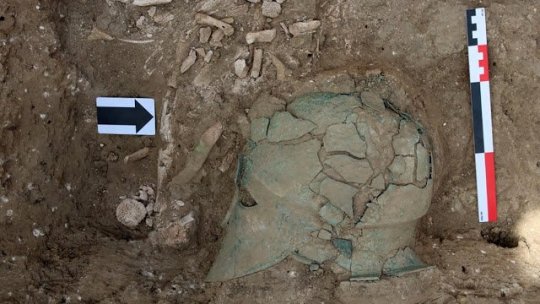
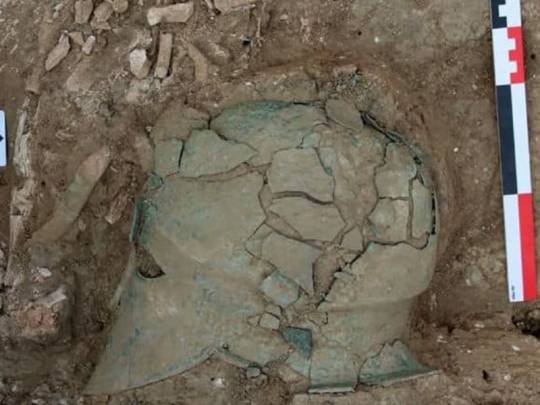
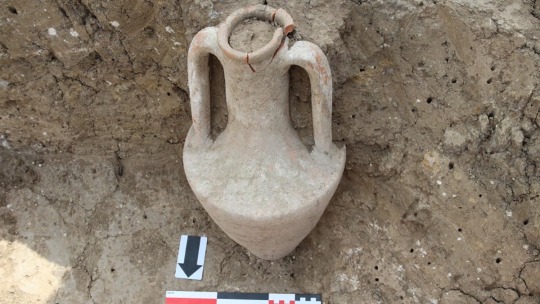
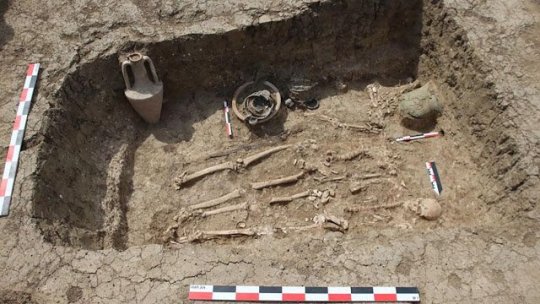
Ancient Greek Corinthian Helmet Found in Southwest Russia
An ancient Greek Corinthian helmet was found in a fifth century BC grave in the Taman Peninsula in southwest Russia.
Made of bronze, ancient Greek Corinthian helmets covered the entire head and neck, with slits for the eyes and mouth, protruding cheek covers (paragnathides), and a curved protrusion in the back to protect the nape of the neck.
The helmet has a padded interior made of fabric or leather to protect the warrior’s skull. These helmets were essential for the Greek hoplites, the famous foot soldiers of the phalanxes.
While the Corinthian helmet is named after the ancient Greek city-state of Corinth, where it originated, it was used across Greece in ancient times from the sixth century to the first, when it fell out of fashion.
The helmet found in Russia is corroded and highly fragmented, but its discovery is extremely important for historical purposes. The Corinthian helmet found in southwest Russia is the only one of its kind discovered north of the Black Sea.
Corinthian helmets appeared in Greece around the 6th century BC and is one of the symbols of ancient Greece. The goddess Athena and the famed Athenian statesman Pericles are both frequently depicted wearing them in ancient Greek art.
In antiquity, when a warrior died, his helmets would be buried next to him. According to Roman Mimohod, director of the expedition of the Institute of Archaeology of the Russian Academy of Sciences (IA RAS), “the helmet of the Taman peninsula belongs to the Corinthian Hermione-type and would date back to the first quarter of the fifth century BC.”
The Kingdom of the Bosporus was established in 480 BC around the Kerch Strait and the Taman Peninsula west of the Bosporus.
The kingdom, with Panticapaion as its capital, lasted almost a millennium, with the last written traces stretching back to the 5th century AD.
It was a place where Greek culture merged with successive nomadic cultures of the steppe, be it the Scythians or the Sarmatians. Between the 6th and 3rd centuries BC, Greeks and Scythians maintained extremely close cultural as well as commercial ties.
Several Greek colonies were established in the region. Their settlement extends from the end of the 7th century BC to the second quarter of the 4th century BC.
The Greeks founded large cities on the northern coast of the Black Sea. The main ones were Olbia at the mouth of the Dnieper, Panticapaion, today’s Kerch, in the extreme west of the Crimea, and Chersonese (Sevastopol) on the Russian bank.
One of the ancient Greek settlements in the area, Phanagoria (Taman), also gave name to to the peninsula where the Corinthian helmet was discovered.
By Philip Chrysopoulos.
#Ancient Greek Corinthian Helmet Found in Southwest Russia#archeology#archeolgst#ancient tomb#ancient grave#ancient artifacts#history#history news#ancient history#ancient culture#ancient civilizations#greek history
29 notes
·
View notes